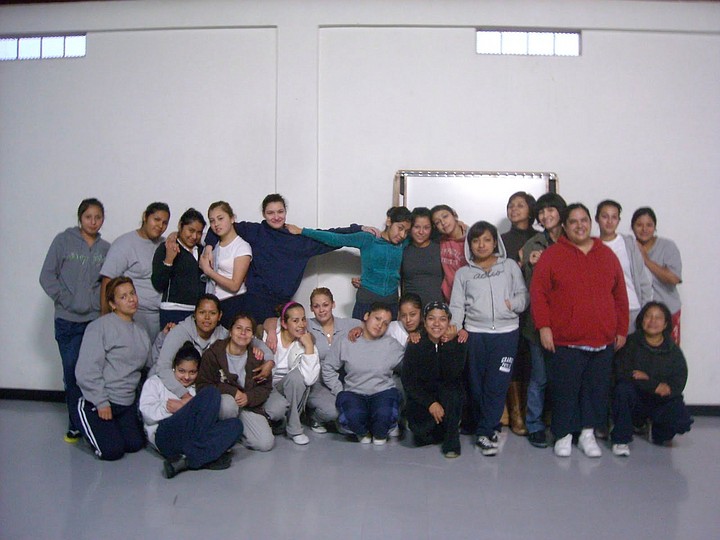 Facebook
Facebook
 X
X
 Instagram
Instagram
 TikTok
TikTok
 Youtube
Youtube
They sell newspapers on street corners. They wander around swap meets selling candy. They offer pamphlets in restaurants, taco stands, supermarkets, parking lots, malls, and homes. They carry around little wooden penny banks and ask for donations. Their skin is usually sunburned from walking the city streets under the sun. They wear a credential around their necks that identifies them as patients of a rehab center. They tell their stories at a fast speed, their voices raspy from repeating the same speech to anyone polite enough to listen. Right before they ask for a donation, they mention the benefits of drug rehabilitation. Most of them are young men, but it is possible to spot women as well. They usually sell chocolate, lollypops, canned sodas, water, and even incense. They’re all over Tijuana, but after awhile they become transparent, invisible. Drivers don’t even look at them; diners don’t even say “No, thanks”; people get used to the sadness of their stories, which end up sounding suspicious most of the time. Ultimately, these men and women become uncomfortable fixtures of the city rapidly going about its business.

Addiction has many stages. The complexity of the drug problem in Tijuana increases year after year. I’ve been working with addicts and women in jails since 2008, and I have heard many stories — most of them end with someone being locked up, a heart broken, a missing family member, or someone feeling guilty for a loved one’s death. At first, most addicts stay at home. Some of them work and manage to pair their addiction with a regular life, but gradually their lifestyle starts to change. They often visit picaderos (crack houses) or they move out of their homes and into the crack houses. Sometimes they operate tienditas (literally, tiendita means “little shop,” but it also refers to houses where drugs are distributed in Tijuana). Some of them shoot drugs at the curve along Avenida Internacional, where the road turns to follow the border. A lot of them end up working as prostitutes in order to pay for their habit, but when they run out of options or start to lose their looks, they move to the Tijuana River canal or start living inside city storm drains. A lot of them die in traffic accidents. Heroin users lose limbs from infection, but even after that, one can still see them cleaning windshields for tips or showing their wounds and begging for money. It’s only when things get this bad that these addicts or their families search for help at a rehab facility.
It’s hard to know how many people are addicted to drugs in Tijuana. Authorities say there are 100,000 addicts, but social investigators say that there are at least 200,000. This means that between 10 and 20 percent of Tijuana’s population has some kind of addiction problem. These numbers make it one of the cities with the highest concentration of drug addicts in Mexico.
According to the Centro de Integración Juvenil (the only government rehab program that operates in Baja), the drugs of choice before 1994 were marijuana, heroin, cocaine, and alcohol. But in 1994, crystal meth came into the picture and became the main reason why people searched for rehabilitation. Marco Antonio Morales, director of CRREAD, the first independently registered rehab center in Baja, says that meth is “the drug of the decade” because, since 2000, 75 percent of the recovering addicts that have come to CRREAD have been meth users; 15 percent are addicted to heroin; 10 percent use cocaine, alcohol, or marijuana.

There are 105 registered rehab centers in the state of Baja California, and there are at least 50 unregistered centers. Some facilities are private with nice rooms, a pool, a sauna, and offer yoga and English horseback-riding classes. As one might expect, these centers are expensive and few people can afford them. The Centro de Integración Juvenil has three facilities in Baja, two of which are in Tijuana. Each of these government facilities has only 29 beds and helps less than 400 addicts per year; however, with the streets awash in illegal drugs, the need for drug rehabilitation has become more critical, and government programs are not enough. Nonprofit rehab centers offer 5000 beds to addicts of all economic and social backgrounds. There are also rehabilitation programs in jails, where 5000 prisoners have access to rehab programs. The bad news is that it’s hard to stay clean in the jails.

The majority of Baja’s rehab centers are independent facilities that operate as “mutual help centers,” which means they are owned, operated, and supported by recovering addicts and their families, and their survival depends almost entirely on donations. Their funds are limited, so they are not able to grow quickly. The premises can start with an abandoned house or an empty lot that volunteers turn into a more livable place. Some build rooms, some paint, some do the plumbing; others work the kitchen and gather donations (cinder blocks, bricks, concrete). Occupational therapy is part of their program. There’s always some uncertainty about which materials they will be able to get, which is why some of the centers end up looking like architectural collages with all sorts of colors, textures, tiles, and details on walls. The same uncertainty applies to their menus, since a lot of their food comes from donations. At one of the rehabs that I visited, I could see boxes of old vegetables against the wall. I didn’t have the courage to ask if they were garbage or if they would be cooked and eaten.
Stuck in Limbo
Rehab centers in Mexico are in a sort of legal limbo. While not jails, they do keep people in confinement. They are not mental hospitals, but they do administer prescription drugs and offer different kinds of therapy. They are definitely not home, but they do often have rules like homes do. And temporary residents at the centers can end up feeling as though they are in a big dysfunctional family.
Some addicts are not convinced about going into the program, and they just do it for awhile. This short stay is what they call tiempo marrano (loose translation: “swine time”). This means they go to rehab to eat well, rest up, and get in shape so they can start using again when they get out. Heroin addicts call this time tiempo de engordar la vena (time to fatten up their veins). It’s an odd survival technique, but since there’s hardly any follow-up program after they get out, about 90 percent of addicts start using again.
There’s a special group of patients in every rehab center called los psiquis or los carnalitos (“the psychos” or “the little dudes”) who are psychiatric patients whose drug use has left them mentally disabled. Sometimes their families can’t take care of them, even when they don’t use drugs anymore. P., a recovering addict who has been in and out of many rehab centers since she was 14 (she’s 26 now), says, “The psiquis are spoiled. We take care of them. We change them, shave them...if we get something fancy to eat, like a cake, and it’s not large enough to feed everyone in the center, we give it to our carnalitos. They are a reminder that if we don’t take care of ourselves, we will end up like them.” P. ultimately discovered that regular visits to the psychologist and antidepressants were more effective for her than staying in a rehab center. But most addicts can’t afford a treatment like hers.
Another group of patients is called los ingobernables (“the uncontrollables”). These patients may or may not be addicted to drugs, but they are forced to go to rehab by their families because they don’t respect the rules and are out of control at home.
Drug addicts are one of the most problematic and vulnerable groups in Mexican society. In October 2010, a group of armed men went inside a rehab center in Tijuana and opened fire on the interns as they were watching television, killing 13 men. That same month, 16 recovering addicts working at a car wash in Nayarit were killed. During the month of June 2010, there was a similar incident in Juárez: 19 men were killed inside the rehab center in which they lived. In 2009, there was another incident in Juárez in which 17 men were killed. Authorities never found the killers or provided an explanation about why rehab centers were being targeted. Rumors raced around the country. Some people said that when drug dealers feel they might be in danger, they hide out in rehab centers, where drug lords send gunmen to kill them. After these incidents, many recovering addicts left the centers. Ever since, there are regular police raids at rehabs in order to find people who are in hiding.

Historian and poet Miriam García and a group of women artists and writers (myself included) developed El Proyecto de las Morras (the Morra Project), a literary workshop in El Mezón, a women’s rehab facility in Colonia Francisco Villa. (Morra is a Northern Mexican word that means “girl.”) Garcia says, “Getting rehabilitated in Tijuana can be a nightmare. One of the biggest problems is that there’s no follow-up once the program is finished and the addicts go back to the same marginalized place, disconnected from family and community. Their families have developed a large network in order to understand the problem and help each other. This is a response — a ‘you are not alone’ call against the incapacity of institutions and their denial of the gravity of this problem. I do believe that health workers understand it; a lot of them are engaged with the people that they treat and their families, but if [no] serious [rehab] program comes from the [government], indolence will prevail....”

There’s one question that I’ve asked repeatedly while I was gathering information for this article: do these rehab-center programs work? Most of the answers were “No.” But P. went further: “It depends on you. If it’s your time, you will go with the program, you will sell newspapers, you will go to meetings. But as soon as you get a chance, you will use again. You only stop when it’s your time. If it is, the program helps.”

They sell newspapers on street corners. They wander around swap meets selling candy. They offer pamphlets in restaurants, taco stands, supermarkets, parking lots, malls, and homes. They carry around little wooden penny banks and ask for donations. Their skin is usually sunburned from walking the city streets under the sun. They wear a credential around their necks that identifies them as patients of a rehab center. They tell their stories at a fast speed, their voices raspy from repeating the same speech to anyone polite enough to listen. Right before they ask for a donation, they mention the benefits of drug rehabilitation. Most of them are young men, but it is possible to spot women as well. They usually sell chocolate, lollypops, canned sodas, water, and even incense. They’re all over Tijuana, but after awhile they become transparent, invisible. Drivers don’t even look at them; diners don’t even say “No, thanks”; people get used to the sadness of their stories, which end up sounding suspicious most of the time. Ultimately, these men and women become uncomfortable fixtures of the city rapidly going about its business.

Addiction has many stages. The complexity of the drug problem in Tijuana increases year after year. I’ve been working with addicts and women in jails since 2008, and I have heard many stories — most of them end with someone being locked up, a heart broken, a missing family member, or someone feeling guilty for a loved one’s death. At first, most addicts stay at home. Some of them work and manage to pair their addiction with a regular life, but gradually their lifestyle starts to change. They often visit picaderos (crack houses) or they move out of their homes and into the crack houses. Sometimes they operate tienditas (literally, tiendita means “little shop,” but it also refers to houses where drugs are distributed in Tijuana). Some of them shoot drugs at the curve along Avenida Internacional, where the road turns to follow the border. A lot of them end up working as prostitutes in order to pay for their habit, but when they run out of options or start to lose their looks, they move to the Tijuana River canal or start living inside city storm drains. A lot of them die in traffic accidents. Heroin users lose limbs from infection, but even after that, one can still see them cleaning windshields for tips or showing their wounds and begging for money. It’s only when things get this bad that these addicts or their families search for help at a rehab facility.
It’s hard to know how many people are addicted to drugs in Tijuana. Authorities say there are 100,000 addicts, but social investigators say that there are at least 200,000. This means that between 10 and 20 percent of Tijuana’s population has some kind of addiction problem. These numbers make it one of the cities with the highest concentration of drug addicts in Mexico.
According to the Centro de Integración Juvenil (the only government rehab program that operates in Baja), the drugs of choice before 1994 were marijuana, heroin, cocaine, and alcohol. But in 1994, crystal meth came into the picture and became the main reason why people searched for rehabilitation. Marco Antonio Morales, director of CRREAD, the first independently registered rehab center in Baja, says that meth is “the drug of the decade” because, since 2000, 75 percent of the recovering addicts that have come to CRREAD have been meth users; 15 percent are addicted to heroin; 10 percent use cocaine, alcohol, or marijuana.

There are 105 registered rehab centers in the state of Baja California, and there are at least 50 unregistered centers. Some facilities are private with nice rooms, a pool, a sauna, and offer yoga and English horseback-riding classes. As one might expect, these centers are expensive and few people can afford them. The Centro de Integración Juvenil has three facilities in Baja, two of which are in Tijuana. Each of these government facilities has only 29 beds and helps less than 400 addicts per year; however, with the streets awash in illegal drugs, the need for drug rehabilitation has become more critical, and government programs are not enough. Nonprofit rehab centers offer 5000 beds to addicts of all economic and social backgrounds. There are also rehabilitation programs in jails, where 5000 prisoners have access to rehab programs. The bad news is that it’s hard to stay clean in the jails.

The majority of Baja’s rehab centers are independent facilities that operate as “mutual help centers,” which means they are owned, operated, and supported by recovering addicts and their families, and their survival depends almost entirely on donations. Their funds are limited, so they are not able to grow quickly. The premises can start with an abandoned house or an empty lot that volunteers turn into a more livable place. Some build rooms, some paint, some do the plumbing; others work the kitchen and gather donations (cinder blocks, bricks, concrete). Occupational therapy is part of their program. There’s always some uncertainty about which materials they will be able to get, which is why some of the centers end up looking like architectural collages with all sorts of colors, textures, tiles, and details on walls. The same uncertainty applies to their menus, since a lot of their food comes from donations. At one of the rehabs that I visited, I could see boxes of old vegetables against the wall. I didn’t have the courage to ask if they were garbage or if they would be cooked and eaten.
Stuck in Limbo
Rehab centers in Mexico are in a sort of legal limbo. While not jails, they do keep people in confinement. They are not mental hospitals, but they do administer prescription drugs and offer different kinds of therapy. They are definitely not home, but they do often have rules like homes do. And temporary residents at the centers can end up feeling as though they are in a big dysfunctional family.
Some addicts are not convinced about going into the program, and they just do it for awhile. This short stay is what they call tiempo marrano (loose translation: “swine time”). This means they go to rehab to eat well, rest up, and get in shape so they can start using again when they get out. Heroin addicts call this time tiempo de engordar la vena (time to fatten up their veins). It’s an odd survival technique, but since there’s hardly any follow-up program after they get out, about 90 percent of addicts start using again.
There’s a special group of patients in every rehab center called los psiquis or los carnalitos (“the psychos” or “the little dudes”) who are psychiatric patients whose drug use has left them mentally disabled. Sometimes their families can’t take care of them, even when they don’t use drugs anymore. P., a recovering addict who has been in and out of many rehab centers since she was 14 (she’s 26 now), says, “The psiquis are spoiled. We take care of them. We change them, shave them...if we get something fancy to eat, like a cake, and it’s not large enough to feed everyone in the center, we give it to our carnalitos. They are a reminder that if we don’t take care of ourselves, we will end up like them.” P. ultimately discovered that regular visits to the psychologist and antidepressants were more effective for her than staying in a rehab center. But most addicts can’t afford a treatment like hers.
Another group of patients is called los ingobernables (“the uncontrollables”). These patients may or may not be addicted to drugs, but they are forced to go to rehab by their families because they don’t respect the rules and are out of control at home.
Drug addicts are one of the most problematic and vulnerable groups in Mexican society. In October 2010, a group of armed men went inside a rehab center in Tijuana and opened fire on the interns as they were watching television, killing 13 men. That same month, 16 recovering addicts working at a car wash in Nayarit were killed. During the month of June 2010, there was a similar incident in Juárez: 19 men were killed inside the rehab center in which they lived. In 2009, there was another incident in Juárez in which 17 men were killed. Authorities never found the killers or provided an explanation about why rehab centers were being targeted. Rumors raced around the country. Some people said that when drug dealers feel they might be in danger, they hide out in rehab centers, where drug lords send gunmen to kill them. After these incidents, many recovering addicts left the centers. Ever since, there are regular police raids at rehabs in order to find people who are in hiding.

Historian and poet Miriam García and a group of women artists and writers (myself included) developed El Proyecto de las Morras (the Morra Project), a literary workshop in El Mezón, a women’s rehab facility in Colonia Francisco Villa. (Morra is a Northern Mexican word that means “girl.”) Garcia says, “Getting rehabilitated in Tijuana can be a nightmare. One of the biggest problems is that there’s no follow-up once the program is finished and the addicts go back to the same marginalized place, disconnected from family and community. Their families have developed a large network in order to understand the problem and help each other. This is a response — a ‘you are not alone’ call against the incapacity of institutions and their denial of the gravity of this problem. I do believe that health workers understand it; a lot of them are engaged with the people that they treat and their families, but if [no] serious [rehab] program comes from the [government], indolence will prevail....”

There’s one question that I’ve asked repeatedly while I was gathering information for this article: do these rehab-center programs work? Most of the answers were “No.” But P. went further: “It depends on you. If it’s your time, you will go with the program, you will sell newspapers, you will go to meetings. But as soon as you get a chance, you will use again. You only stop when it’s your time. If it is, the program helps.”
Comments